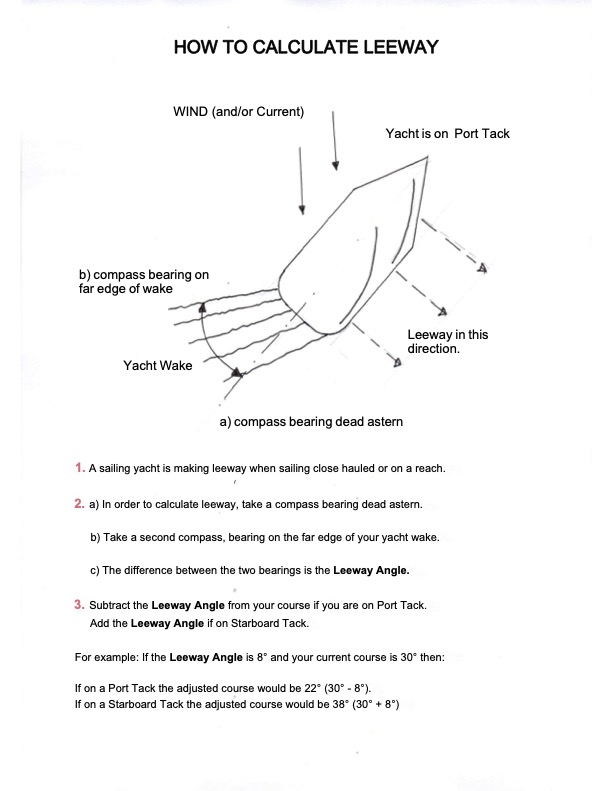Leeway
All vessels whether small dinghies, sailing yachts, motor yachts or very large ships when sailing on the sea experience to some level something called “Leeway”.
What is Leeway?
Wind and/or current will make a vessel move off line from it’s intended course. This is due to the sideways force applied to the vessel which will move the vessel off course unless compensated for in order to maintain the correct course.
Leeway will be most prevalent when the vessel is beam on to the force and will also be more affected if having a large area above the waterline e.g large ship.
Vessels sailing on a run downwind will be less affected, if at all. The closer hauled a vessel will also be less affected by leeway. Sailing on a reach could be affected by a greater degree.
Vessels which have a large keel may also be affected than boats with less underwater structure. The keel of a yacht is designed to reduce leeway, but has limitations in this. Leeway increases with angle of heel and a slow boat will also increase leeway. Bad weather will have a poor effect and can easily increase leeway by more than 30º.
In order to maintain a straight course to your required waypoint or destination you will need to compensate for leeway due to wind or current.
How to calculate Leeway
This is not an exact science by any means, requires a bit of practice to be accurate and is always something of an estimate.
Firstly you need to see if your course is being affected by leeway.
This is easy to check by looking back to your vessel’s wake whilst you are sailing on a steady bearing. If your wake is being set to one side or other of your boat and is not following directly behind you, then you are experiencing leeway, and need to correct your course to take it into account.
This is where the practice comes in!
The following sketch and description gives a good understanding of how to calculate for leeway. The trick is to be confident that you have accurate compass bearings dead astern of your boat together with accurate (as you can get) bearing of the far edge of your boat wake. Practice makes perfect, as they say.

OK once you have calculated the leeway you can use it to correct your Compass course.
If you are using the calculations to go from True Course (Tº) to Compass Course (Cº) via Variation (Vº) and Deviation (Dº), you will need to subtract or add the Leeway to the True Course (Tº). This is because, if the leeway is ‘large’ it will change the Magnetic Heading (Mº) which may be sufficient to affect the Deviation (Dº) figure for that Magnetic Heading (Mº).
An easy way to remember whether to add or subtract leeway is to remember that the required adjustment is to determine a course that will counteract the effect as applied to the vessel by the leeway in a direction that will move the course in the direction of the source of the force. Thus, subtract the leeway angle from your course if you are on a port tack or add the leeway angle from your course if you are on a starboard tack.
In other words:
True Course (Tº) ± Leeway ± Variation ± Deviation = Compass Course (Cº)
Or going from Compass Course (Cº) to True Course (Tº)
Compass Course (Cº) ± Deviation ± Variation ± Leeway = True Course (Tº)
Finally - Is it essential to use Leeway? If you use leeway you will generally reach your destination quicker and for a voyage of any distance where you are sailing on a planned course between waypoint, it is clearly important that you use leeway.
If your journey is short and leeway doesn’t appear to be of any significance, then it may not be as important to a timely voyage.
If in doubt we recommend that you use Leeway - it also gives you good practice in calculating it!
Please note that the above article has been written in addition to our article relating to True Heading, (T°) Variation (V°) Magnetic Heading (M°) Compass Deviation (D°) and Compass Course (C°).
This article may be accessed by clicking Here. (opens in a new tab).


